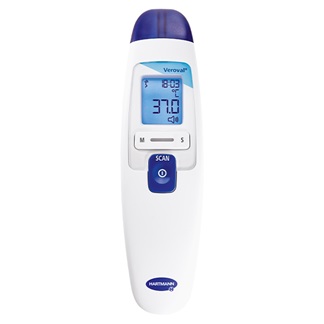Veroval® DS 22 – 2 in 1 Infrared Thermometer

The Veroval® 2 in 1 infrared thermometer for the whole family* offers quick and easy temperature measurements with two methods: in the ear or on the forehead.
Learn more
Fever is a common response to infection in the body. It can help fight infection. The term refers to an elevated temperature of the body that is substantially beyond the normal range.
The presence of a fever is usually related to stimulation of the body's immune response. Fever can support the function of the immune system against infectious agents such as viruses and bacteria, and can make it difficult for temperature-sensitive viruses and bacteria to reproduce.
(Not all of the symptoms occur or appear at the same time)